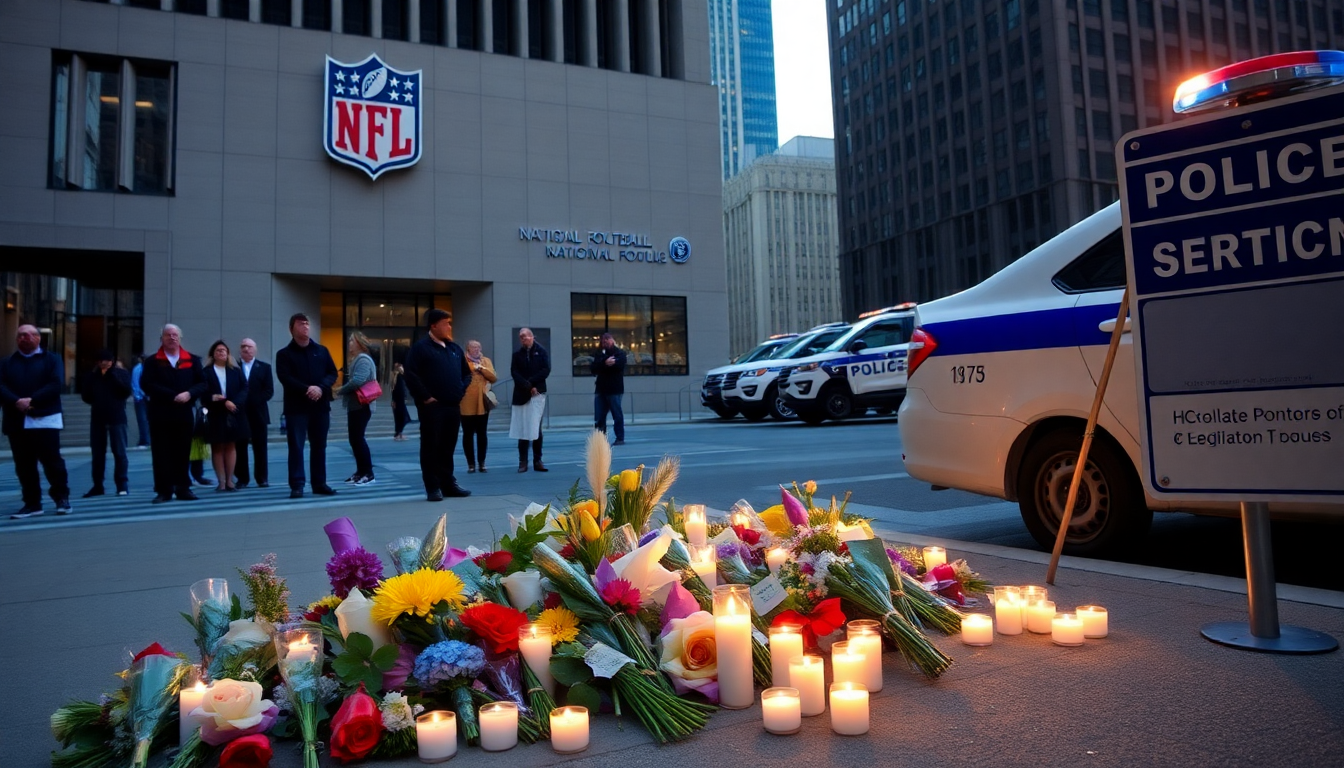Table of Contents
The tragic shooting at the National Football League’s headquarters in New York City has sent shockwaves through the sports community and beyond. This heartbreaking incident, which claimed the lives of four individuals, including an NYPD officer, has ignited a much-needed conversation about safety and mental health in high-pressure environments like professional sports. How do we protect those who entertain and inspire us, especially in such volatile times?
The Incident and Its Immediate Impact
On a fateful Monday evening, a mass shooting rocked the city, hitting close to home for sports enthusiasts everywhere. The shooter, identified as Shane Tamura, reportedly had ties to the NFL, as evidenced by a handwritten note referencing the league. This unsettling event unfolded in the very building where the NFL’s headquarters is located, at 345 Park Avenue in Manhattan. The proximity of this tragedy to the heart of professional football has left a profound impact on the community. Can you imagine the fear and confusion that gripped those who were there?
Mayor Eric Adams addressed the media the next day, confirming that the shooter had seemingly targeted the NFL. Coaches from both the New York Giants and Jets expressed their condolences, underscoring the tragedy’s reach into the lives of everyone involved in the sport. Giants head coach Brian Daboll shared, “Our thoughts and prayers are with the people affected by this tragedy,” capturing the somber mood that enveloped the team during training camp. How do you even begin to process something so devastating?
Community Responses and Reflections
The NFL community has responded with overwhelming sympathy. The National Football League Players’ Association (NFLPA) released a heartfelt statement mourning the loss, extending condolences to the families of the victims, and recognizing the bravery of law enforcement and emergency responders who rushed to help. It’s a stark reminder of how interconnected we all are, isn’t it?
This incident has also reignited conversations about mental health, especially given Tamura’s reported struggles, which included claims of chronic traumatic encephalopathy (CTE). The dangers of mental health issues in high-pressure environments like professional sports cannot be overstated, and this shooting serves as a grim reminder that we must prioritize these conversations. What can we do to ensure that athletes feel supported and understood?
Looking Ahead: Safety and Mental Health in Sports
As investigations continue, it’s clear that we need to foster a broader dialogue about safety and mental health in the sports world. The NFL and other sports organizations must take proactive steps to ensure the well-being of players and staff alike. This means providing adequate mental health resources, raising awareness, and creating an environment where individuals feel safe discussing their challenges. Have we done enough to support those on the front lines?
In a time when gun violence feels alarmingly prevalent, the sports community must advocate for enhanced security measures not just at games but across all organizational facilities. The tragic events at the NFL’s headquarters should serve as a rallying cry for change, prompting both immediate actions and long-term strategies that protect the future of the sport and its community. What kind of legacy do we want to leave for future generations?
In conclusion, while the shooting at the NFL headquarters is a tragic event, it opens up crucial conversations about mental health and safety that we can’t afford to ignore. As the community mourns, let’s channel this grief into meaningful action to ensure such tragedies do not happen again. After all, change starts with us.


